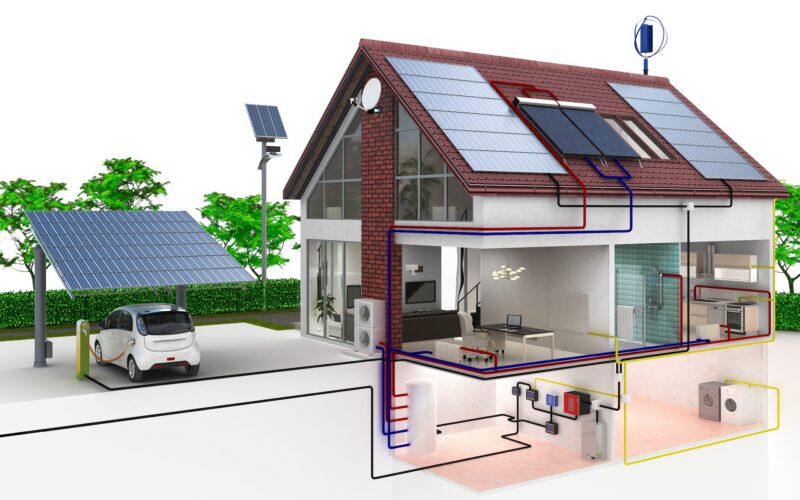As homeowners use their heating systems to maintain a comfortable indoor temperature, energy bills tend to skyrocket during the long winter months. However, the cost increase does not need to be so significant that it leaves you worrying about affording it.
There are many ways for homeowners to make their homes more energy-efficient, saving hundreds of dollars in bills each year. Some require a significant capital outlay that pays for itself as time passes. Others are simple DIY jobs that are inexpensive and quick to perform. Here are some ways to make your home more energy-efficient:
Heating solutions
Heating systems are the greatest energy guzzlers in most households. The best way to see a dramatic decrease in energy consumption is by installing eco-friendly electric heaters from BestElectricRadiators, Herschel Select, and Technotherm. BestElectricRadiators has a range of heating solutions to suit every homeowner’s needs, tastes, and budgets. Its slimline designs are easy to fit into any room and do not take up unnecessary space. Many BER products have smart capabilities, allowing owners to control them via an app from wherever they are.
Older heating systems were not designed with energy efficiency in mind. Newer products have high energy efficiency ratings and will save a lot of electricity. They are less expensive to run and offer more effective heating. Radiators are a popular choice. They can be wall-mounted or bought as freestanding products.
Lighting solutions
Many people still have not seen the light and converted to energy-efficient lighting options, such as low-energy bulbs or LED lighting. Both use considerably less power while offering the same or higher brightness levels. Users have many choices when it comes to energy-efficient lighting brightness levels. They can opt for brighter bulbs in rooms that require good lighting, such as the living room, kitchen, home office, and bathrooms. Lower wattage bulbs are best for lights left on most of the time in areas where brightness is not necessary, such as hallways.
Solar-powered outdoor lights do not use any electricity at all, making them great cost savers. They need a few hours of sunlight to charge sufficiently for overnight use. Sensors determine when they switch on and off according to how dark or light it is.
Hot water solutions
Like any appliance with a thermostat, a water heater uses more electricity during winter to maintain constant hot water temperatures. Most households do not need piping hot water available 24/7. If this is the case, install a water heater timer that switches the appliance on and off at specific times. You only need to run your water heater for an hour to have a sufficient hot water supply. Many homeowners run theirs twice a day, once in the morning and again at night, as these are peak times when people need to bath or shower.
Get a water heater blanket for use during the winter. It insulates the water heater, slowing down how quickly the hot water it contains cools down. Preventing heat loss could mean that you need to run your water heater for a shorter time before it heats up sufficiently.
Ceiling solutions
It might seem counterintuitive to use ceiling fans during the winter. However, they are designed to help with heating as well as cooling. Most ceiling fans have a winter setting that homeowners can select during colder months. It reverses the direction that the fan rotates.
In its summer setting, a fan sucks hot air up and pushes cool air down. In its winter setting, it pushes hot air downward. Hot air rises and escapes a room through its ceiling. However, using a ceiling fan captures the heat and sends it back down into the room. Ceiling fans use minimal power as they do not have thermostats.
Appliance solutions
Fridges, freezers, dishwashers, washing machines, and dryers contain thermostats, making them high-energy consumers. Like your heating system, older models are not as energy efficient as new ones. When you replace an old appliance, you do not only get one that works better; it also uses less electricity.
Keep your appliances clean and ensure that they seal properly to avoid heat loss during operation. Consider using programs and settings that require the thermostat to maintain lower temperatures while in use, saving you electricity.
